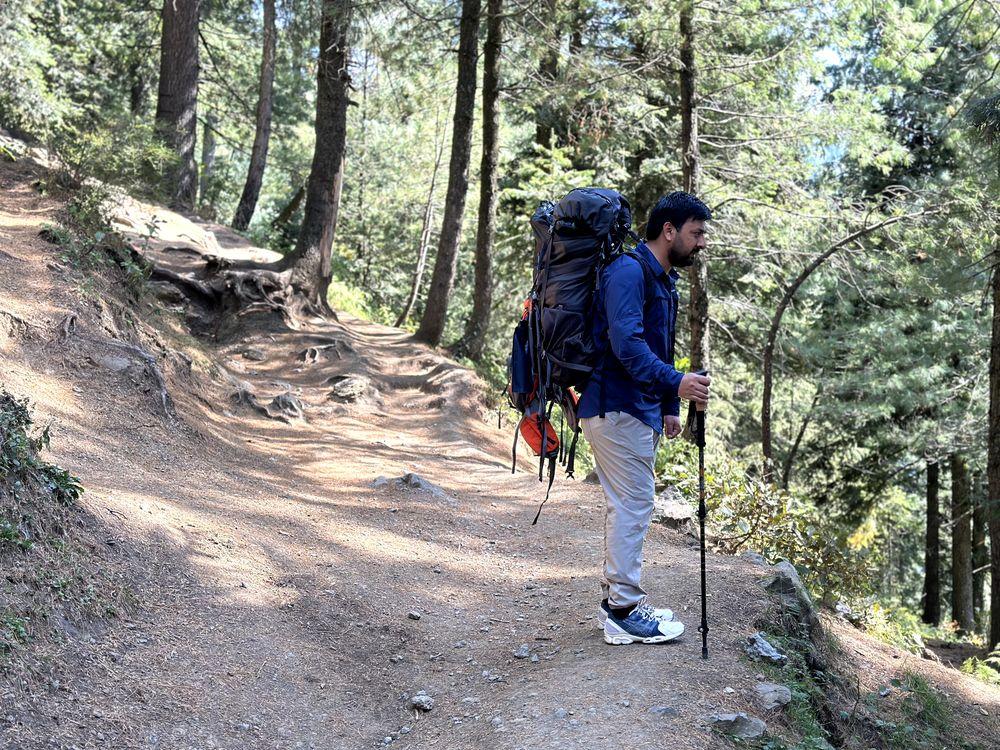There is also a lot of discussion and debate amongst the hiking community about what kind of hiking shoes to wear. Many seasoned backpackers will tell you you don’t need those bulky hiking boots. Is it so? But this advice comes from experienced hikers who hate to add even an ounce of weight to their feet. And they have good reasons for it, supported by expert podiatrists.
Best Running Shoes: View at Amazon
An old saying goes, “Every pound on your feet equals five pounds on your back.” And let me tell you, that saying holds more truth than you can imagine.
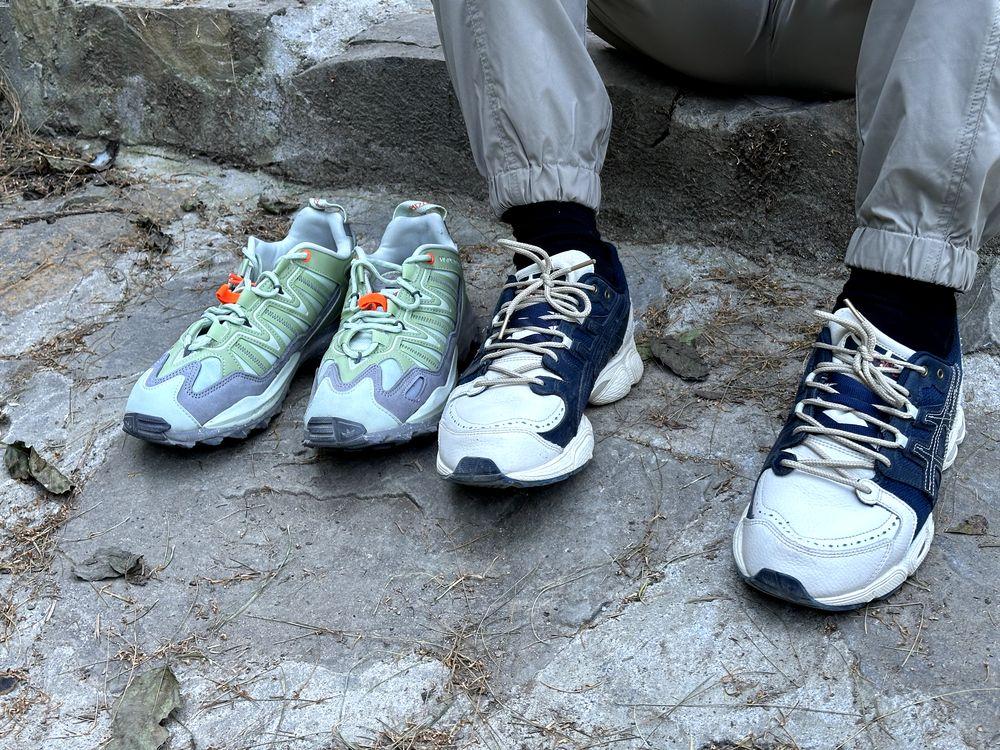
Related: Are Tevas Good For Hiking
Finding the right pair of shoes for hiking is more challenging than it seems due to the lack of hiking experience and the availability of a variety of footwear like boots, shoes, sandals, trail runners, and other running shoes.
Simply put, running shoes are great for lightweight hiking. They offer the necessary foot protection on the trail and enhance hiking performance thanks to their lightweight design and added breathability.
Related: Can You Hike in Steel Toe Boots?
Even in chilly weather, your feet get sweaty during strenuous hikes, making running shoes suitable for various climates. To further determine whether running shoes are a good choice for you, let’s dig into the most common pros and cons before concluding.
Pros of Wearing Running Shoes for Hiking
Your running shoes are a home away from home if you are a regular runner. You get attached to them and care for them like your kin.
Once you are on a terrain other than your running track and sport a different footwear, you realize how loyal of a companion your running shoes are. Before you pick your next pair, let’s go through the benefits of your running shoes for a hike, together.
Lightweight Than Hiking Boots
This is the number one reason why hikers prefer to hike in running shoes instead of their clunky hiking boots. Sure, you can find some lightweight hiking boots these days, but they’ll cost you a pretty penny and you’ll still be lugging around extra weight on your feet. As the old saying goes, less weight on your feet equals a better hiking experience and less exhaustion.
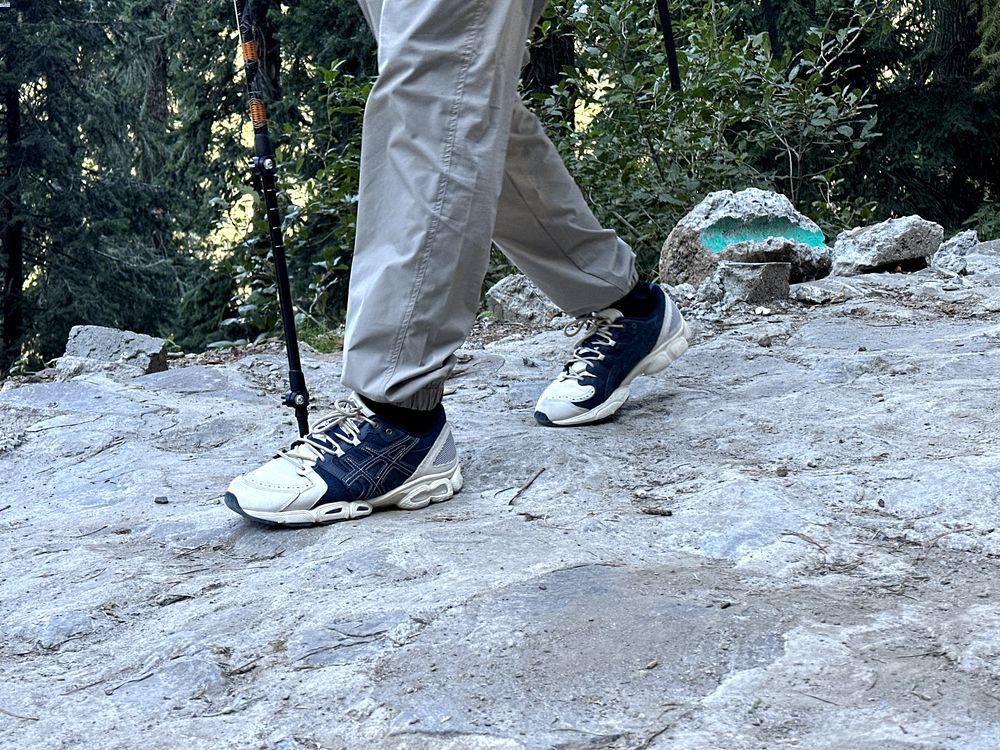
Trust me, if you choose the heavier models, even just a few extra grams can leave your feet throbbing after just a few miles. That’s why running shoes are the way to go for those long hikes. Hikers love them because they’re lightweight and perfect for those extended treks.
Some folks even wear hiking sandals to shed more weight, but running shoes strike a nice balance. Don’t get me wrong, hiking sandals have their place, too, and it’s definitely worth giving them a shot.
More Breathable
Waterproof hiking shoes face a structural dilemma when it comes to ventilation. Typically, their upper is treated with silicon or strain leather. This technology is designed solely to keep water out of the shoe, but getting the water out is a whole different story.
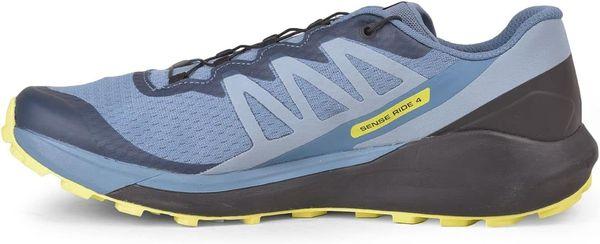
Now, here’s where your running shoes have an advantage. While they are more susceptible to moisture from the outside, waterproof running shoes are still a better choice compared to waterproof hiking shoes. The upper of a waterproof running shoe is made with a hydrophobic, porous mesh. This allows for ventilation in case your shoe gets wet. It promotes breathability, helping dry out sweat, moisture, and water.
These shoes can drain faster in rainy or snowy terrains, saving you valuable hiking time. And the best part? They can help prevent blisters. So you can enjoy your outdoor adventures without worrying about uncomfortable foot issues.
Great For Quick Hiking’s
A long-distance hiking trip is organized around a set time to get to a particular camping site. While you are on an energy-conserving strut, your feet are active and helping your brain to pace accordingly.
Guess what helps you gain a quicker pace? Yep, your dear old running shoes.
As opposed to hiking boots, your running shoes absorb four times your body weight per step. Due to their structural flexibility, they allow you pick up your pace, support a jogging gait and provide support to the forefoot, keeping you balanced.
Don’t be shy to sport trekking poles if you are not a seasoned hiker. For an untrained hiker, ankle pain is a tell-tale sign that your foot needs more support than your running shoes are capable of providing.
So, before you embark on your journey, invest in some trekking poles. This will help you in the longer run (quite literally).
Cons of Wearing Running Shoes for Hiking
Lack Support And Stability
Lightweight shoes give you a more natural feel when you’re out hiking. However, they might not be the best choice for everyone, especially if you need extra support and stability for your feet. People with flat arches, in particular, require more cushioning and padding compared to those with neutral or high arches. Lightweight running shoes don’t offer as much cushioning and support, so if you have flat arches, it’s a good idea to go for heavier shoes instead.
It’s also important to note that lightweight running shoes don’t provide the necessary support for people dealing with foot pain or plantar fasciitis. In these cases, it’s better to prioritize foot health and opt for a more comfortable option, even if it means carrying some extra weight.
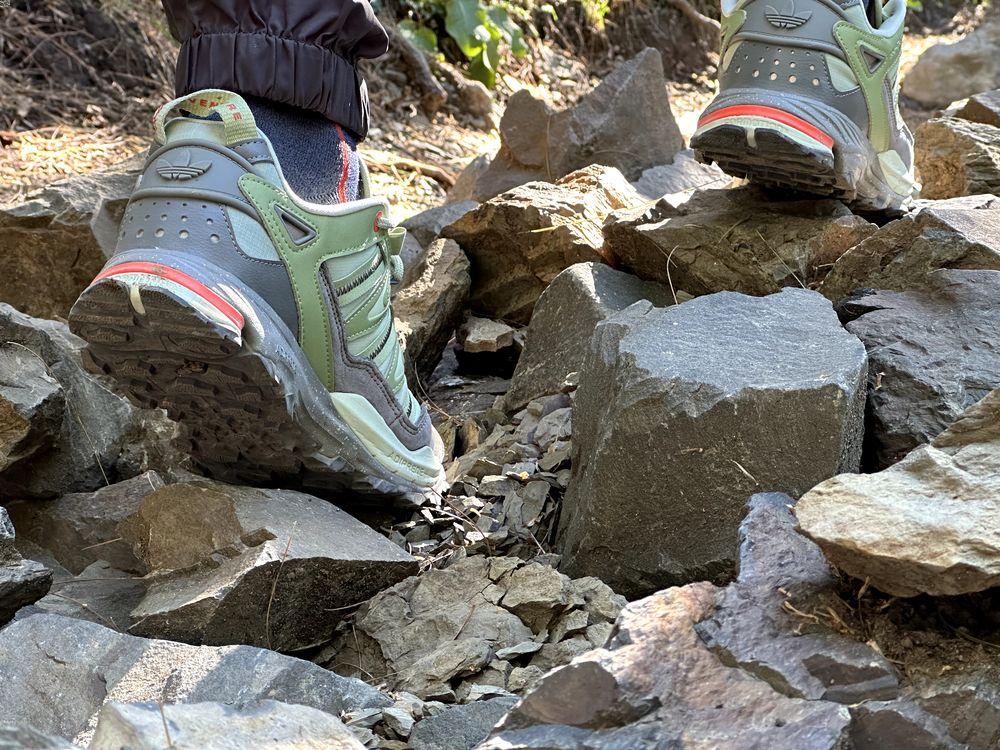
Moreover, if you’re on the heavier side (weighing more than 90kg), you’ll likely find more comfort in hiking with heavier shoes. The lighter models can cause foot aches and discomfort for those carrying more weight.
When it comes to hiking boots, they offer superior stability, traction, and support, especially on rough, rugged, and snowy trails. Their better grip and tough build make them reliable in any situation. If you’re hiking in wet conditions, a waterproof hiking boot will keep your feet dry, allowing you to move freely without the risk of tripping.
Unlike running shoes, hiking boots are designed to be durable and long-lasting, even with frequent and intense use. They are built to withstand the demands of rugged terrain, ensuring you’re well-prepared for any adventure. Hiking boots, offer better traction, stability, and durability, making them a reliable choice for any hiking expedition on rough and tough trails.
How to Choose Running Shoes for Hiking
As we discussed above, there is no issue with hiking in your running shoes, but there are a few things that you should consider while buying running shoes for hiking. These are mainly personal preferences rather than general rules of thumb.
People with a lighter weight feel more comfortable in lightweight running shoes than people with a heavier weight of over 90kg. We advise you to go for heavy boots if you are overweight to get a better weight-to-comfort ratio; otherwise, your feet will tire quickly, and you might also get foot aches.
Having said that, in addition to weight, arch shape also plays a significant role in deciding which pair of shoes is better. Neutral to high-arch people, they feel comfortable even in the lightweight running shoe models, but people with flat feet will find it difficult in lighter models as they don’t get the required cushioning for their foot shape. Hence, they should opt for running shoes with better cushioning.
If you are someone who gets more foot pain, opting for a lightweight foot might further increase the pain due to their less cushioning, so it’s better to go for a more comfortable model with extra weight.
You can also insert comfortable shoes insoles if you have plantar fasciitis or foot pain, but choose running shoes whose insole can be removed. Check the traction of running shoes while buying, as it is crucial to have more traction on rugged and slippery trails for better grip and foot stability. Less traction will suffice on a well-managed, less technical, and slippery trail with no slippery rocks.
Alternative Option for Hiking
Now that we have weighed our pros and cons, lets see what we can use instead of either of the two options.
Related: Can You Wear Sandals In Hiking?
If you have been an avid hiker, you must have come across a community of barefoot hikers or ones walking in their sandals or moccasins. Sandals are a great alternative to boots and shoes because they not only come with less weight but are also more breathable and offer plenty of traction too. The idea of connecting with our primitive nature might be a compelling one, but it comes with risks of its own.
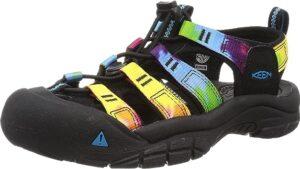
The foremost concern is protection. You might be able to trek a worn-down path, but side-slopping where the pressure on the sides of your feet is enormous, needs support around the ankles and a cushion to keep you safe from dermal separation of the skin layers.
In addition to the information above, hiking sandals have also been used as an alternative to hiking boots and running shoes. While they offer a little more support and sole protection over bare foot hiking, they can also be hazardous on rugged landscape.
Summary: Can You Wear Running Shoes For Hiking?
Can you hike in running shoes? Absolutely! Running shoes are an excellent lightweight alternative to traditional hiking boots. Not only do they offer exceptional breathability, but they also provide reasonable traction. But if you are overweight or have foot aches, opting for a more comfortable option or heavy running shoes is a better option for extra cushioning.
Furthermore, the lightweight nature of running shoes makes them ideal for long-distance treks over challenging terrain. You can easily lace them to your backpack and alternate between your hiking boots and running shoes as the terrain permits. This versatility ensures you have some alternatives to heavy boots for simple terrain patches. In the end, it depends on your personal preferences and hiking experience; the more you hike, the more you get equipped with the proper footwear.
